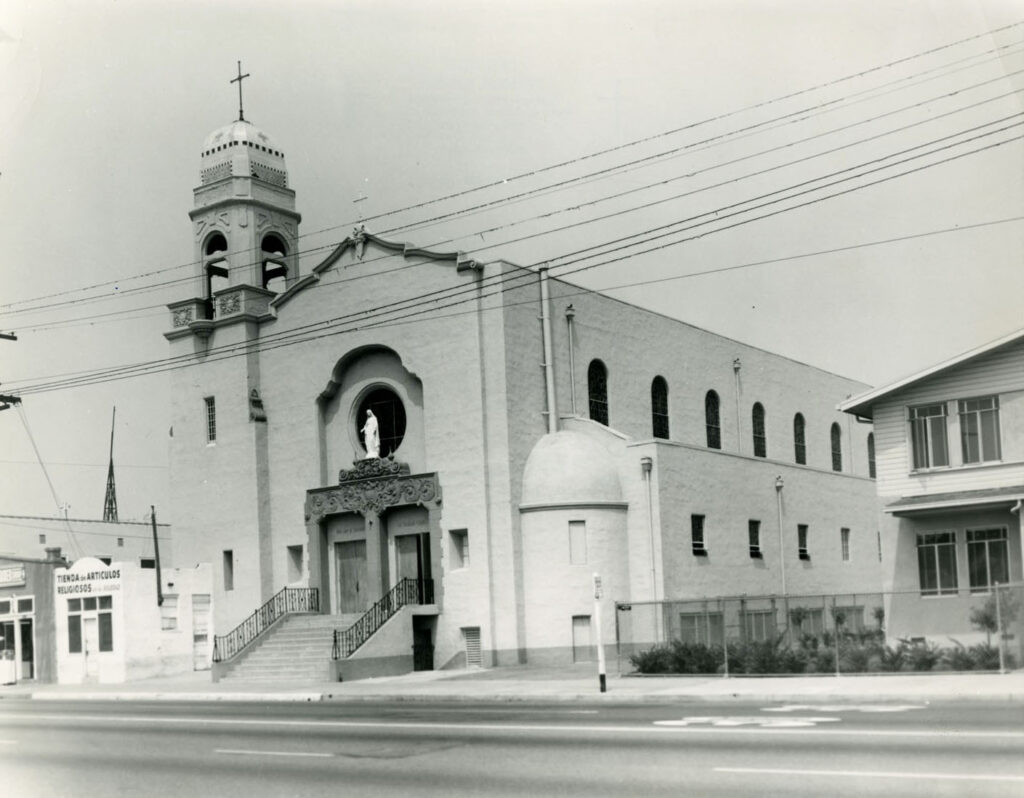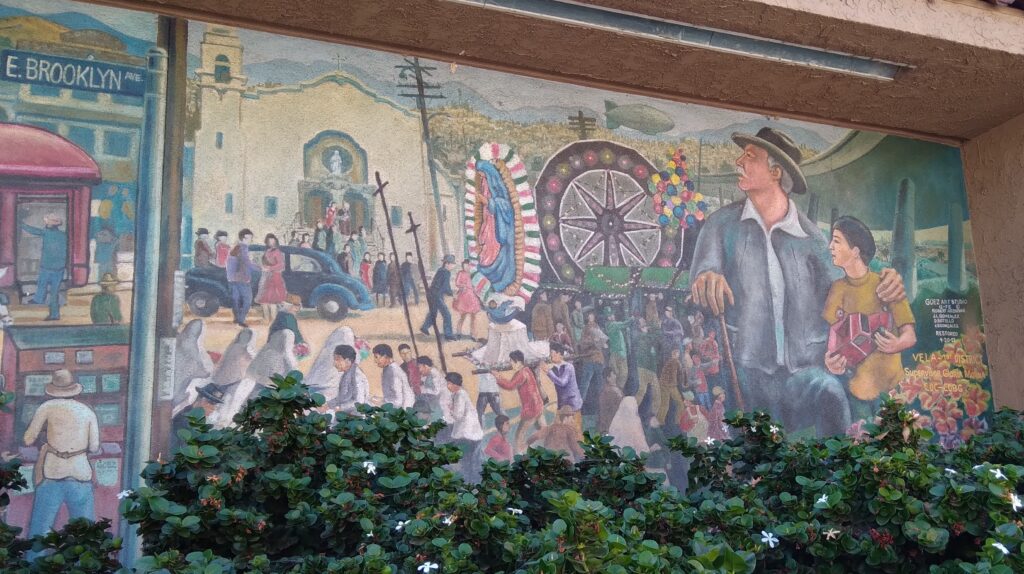On December 4, 2022, Mexican Catholics will mount the 91st annual Procession and Mass to honor Our Lady of Guadalupe in East Los Angeles. The tradition began in 1931, as the Claretians took on their third parish in Los Angeles: Our Lady of Solitude, or Soledad as everyone calls it. On that December 12, fervent parishioners, Mexican sisters, and Claretians organized the first procession for the Virgin of Guadalupe that overtook the barrio’s main street, Brooklyn Avenue. Soledad, built in the Spanish Colonial Revival style with its ivory façade, anchored the East Los Angeles neighborhood.

Soledad parishioners filled the streets for processions marking Good Friday and Corpus Christi. The September 16th parade celebrating Mexican Independence Day also went past Soledad on Brooklyn. As an early parishioner Cornelio Camacho recalled, “in those times, love of Mexico and its customs were solid. In the fiestas, the streets overflowed with people; both old and young enjoyed the celebration and all was lovely.” To publicly celebrate la guadalupana in the 1930s meant countering the trials of the Great Depression, the forced repatriation of thousands of Mexicans from Los Angeles, and the anti-clerical climate in Mexico.
The celebration of December 12th grew larger over the postwar period, coming to include Anglo Catholics. In the early 1960s the procession included Catholics from 75 parishes, 60 Catholic high schools, and a large contingent of the Knights of Columbus. Dozens of carros alegóricos (floats) slowly drove east, past the viewing station at Soledad’s doors. The Claretian clergy and altar boys in their lacy surplices led. Members of Soledad’s societies proudly wore their sashes or medals: las carmelitas, the Legion of Mary, the Apostolate of Prayer, Nocturnal Adoration, and las guadalupanas. In matching outfits children walked behind a banner proclaiming Our Lady of Soledad School. Many people carried the elaborate cera escamada: tall candles, enshrined on sculpted paraffin bouquets or wreaths—an artisanal tradition harking back to colonial Mexico. Everywhere, on floats and in the crowd, children carried roses: little girls in rebozos and braids, brothers with drawn-on mustaches in white garb, little Juan Diegos. People walked a mile to the procession’s destination, East Los Angeles City College. In 1962, the procession’s 32nd year, over 15,000 gathered for a special Mass at the college athletic stadium, and the Archbishop of Los Angeles presided.

This December thousands of Catholics from across Los Angeles will demonstrate their faith and mexicanidad walking past Soledad. They will proceed eastward on Cesar Chavez Avenue, renamed for the devout farmworker leader in 1993, adding another layer of history and meaning to the event. In a city where power and wealth reside many miles west, for nine decades on December 12th, Soledad and East Los Angeles are on the map.

Deborah E. Kanter wrote Chicago Cátolico: Making Catholic Parishes Mexican (University of Illinois Press, 2020). Her current research focuses on the Claretian Missionaries in the US and the creation of a national Latino ministry, 1902-2020. Thanks to Dr. Emiliano Aguilar for his support and input on this essay.
